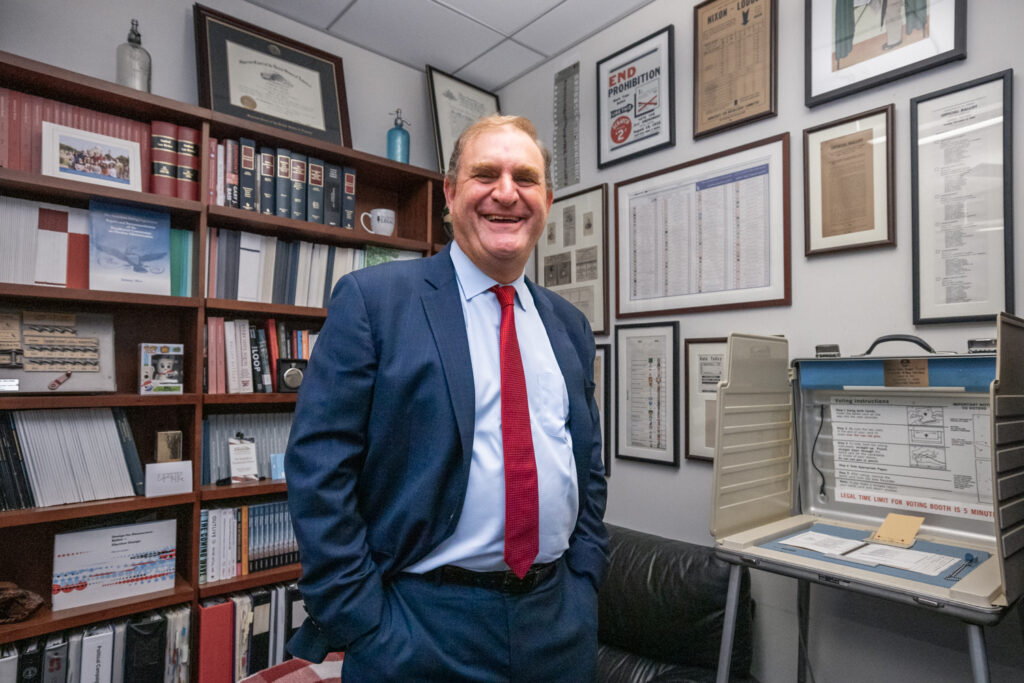Nate Persily’s Mini Museum of Election History
The legal scholar’s office is a trove of artifacts of the democratic process, from the cartoon that inspired the term “Gerry-mandering” to the machine responsible for the infamous hanging chads.
Originally published in the Stanford Report on October 31, 2024.
Along the second-floor corridor of faculty offices in the William H. Neukom Building at Stanford Law School, one door stands out.
It is completely covered by red and blue. Upon closer inspection you’ll see it’s papered with electoral maps of the United States showing results from the 2022 November general election broken down by county. There’s also a map detailing U.S. Senate and House election results, showing how each district voted.

The door and its colorful display belong to the office of Nate Persily, the James B. McClatchy Professor of Law. And if you haven’t already guessed, elections are his thing.
As are election maps. In addition to being a prolific legal scholar in the law of democracy, he has also served as either a special master or court-appointed expert to craft congressional or legislative districting plans for Georgia, Maryland, Connecticut, New Hampshire, New York, North Carolina, and Pennsylvania.
The maps that are central to his work are also central to the decor of his office, which is lined with framed maps of the districts he’s helped redraw over the years.
“Each one of them has a story behind it,” said Persily during a tour of his office, in which he reflected on the painstaking process of districting planning.
For example, the New Hampshire map was one he said he agonized over.
“It’s only two districts, so it’s not terribly complicated, but I actually suffered over it because you had to move a few thousand people from one district to the other,” Persily said. But he was able to figure out a near perfect split by moving just five towns from one district to the other. “I hit the magic number perfectly – incredible, really.”
But not all maps offer such elegant solutions.
“In reality, it’s a bunch of trade-offs of values that are in tension with each other,” he said, explaining that factors such as race, competition, geography, and industry must all be weighed. For example, when redrawing Georgia’s election map, he had to carefully consider whether a town was in a pecan- or peanut-growing county.
Alongside family photos there’s also a collection of sports memorabilia, including a soccer ball signed by David Beckham and a basketball signed by the 1985 Boston Celtics team.
While Persily is not affiliated with a political party, he’s a little more flexible when it comes to showing his allegiance to a sports team. Thanks to his two sons, he roots for the Golden State Warriors.
About Stanford Law School
Stanford Law School is one of the nation’s leading institutions for legal scholarship and education. Its alumni are among the most influential decision makers in law, politics, business, and high technology. Faculty members argue before the Supreme Court, testify before Congress, produce outstanding legal scholarship and empirical analysis, and contribute regularly to the nation’s press as legal and policy experts. Stanford Law School has established a model for legal education that provides rigorous interdisciplinary training, hands-on experience, global perspective and focus on public service, spearheading a movement for change.
